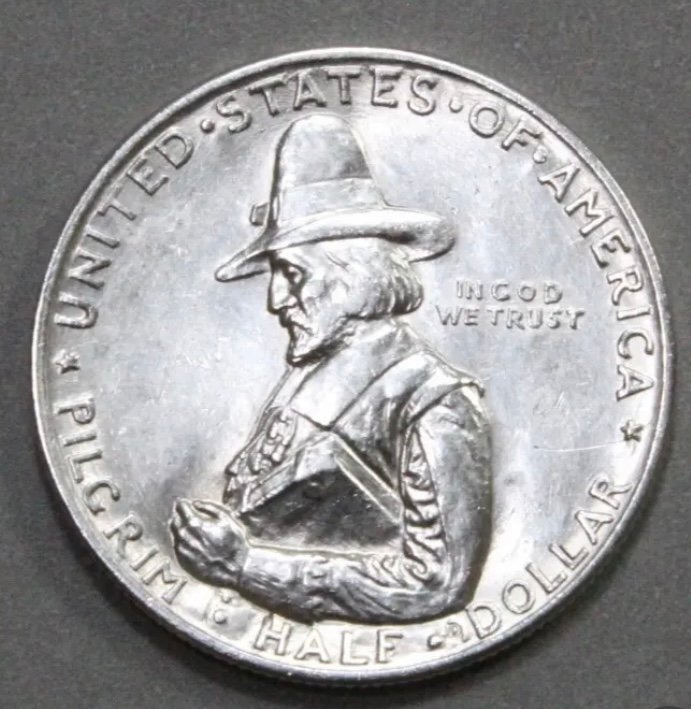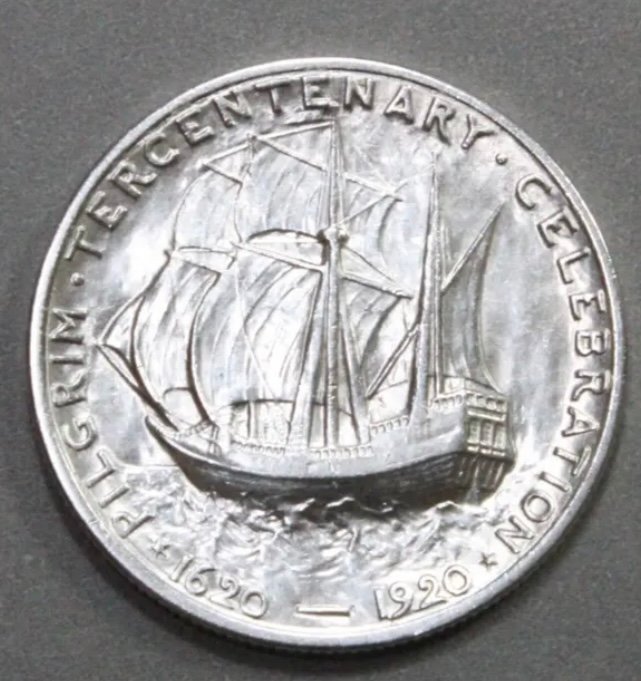Should I…..
Afternoon everyone….
What do you think ? Should I……
I’ve been contemplating this one for quite some time now. Things to consider: will this come back at the grade I’m looking for or believe it to be. Graded coins sell much quicker than raw coins and for a substantial amount more. Leaving raw coins to my daughter to sell if she chooses to, she will most likely get taken. Since she has no interest in coins or stacking so she won’t know better.
These are the thoughts in my head….
The coin is a 1921 Pilgrim commemorative half dollar. It is raw (meaning not graded). In my opinion it’s a minimum of an MS63, but I think it could easily be an MS64. There is quite a bit of difference in price, but even at an MS63 I’d make a profit. Even after paying for it to be graded.
Here is the info on the coin:
The Pilgrim Tercentenary half dollar or Pilgrim half dollarwas a commemorative fifty-cent coin struck by the United States Bureau of the Mint in 1920 and 1921 to mark the 300th anniversary (tercentenary) of the arrival of the Pilgrims in North America. It was designed by Cyrus E. Dallin.
Pilgrim Tercentenary half dollar
United States
Value
50 cents (0.50 US dollars)
Mass
12.5 g
Diameter
30.61 mm (1.20 in)
Thickness
2.15 mm (0.08 in)
Edge
Reeded
Composition
90.0% silver
10.0% copper
Silver
0.36169 troy oz
Years of minting
1920–1921
Mintage
1920: 200,112 including 112 pieces for the Assay Commission(48,000 melted)
1921: 100,053 including 53 assay pieces (80,000 melted)
Mint marks
None, all pieces struck at the Philadelphia Mint without mint mark
Obverse
Design
Governor William Bradford(coins struck in 1920 do not display a date on this side)
Designer
Cyrus E. Dallin
Design date
1920
Reverse
Design
The Mayflower
Designer
Cyrus E. Dallin
Design date
1920
Massachusetts Congressman Joseph Walsh was involved in joint federal and state efforts to mark the anniversary. He saw a reference to a proposed Maine Centennial half dollar and realized that a coin could be issued for the Pilgrim anniversary in support of the observances at Plymouth, Massachusetts. The bill moved quickly through the legislative process and became the Act of May 12, 1920.
Sculptor James Earle Frasercriticized some aspects of the design, but the Treasury approved it anyway. After a promising start, sales tailed off, and tens of thousands of coins from each year were returned to the Philadelphia Mint for melting. Numismatist Q. David Bowershas cited the fact that the coins were struck in the second year as the start of a trend to force collectors to buy more than one piece in order to have a complete set.
Now for the coin….


I think that you should adopt me as your son and give all your treasures to me
!pimp
!pimp
I'd say get it graded.
You received an upvote of 100% from Precious the Silver Mermaid!
Thank you for contributing more great content to the #SilverGoldStackers tag.
You have created a Precious Gem!
Have it graded, @silverd510 !!!
!PIMP
!LADY
View or trade
LOHtokens.@silversaver888, you successfully shared 0.0100 LOH with @silverd510 and you earned 0.0100 LOH as tips. (12/50 calls)
Use !LADY command to share LOH! More details available in this post.
!pimp
Beautiful, she can sell it to me so I could get it graded and upvoted 😄
!pimp
Get it graded..